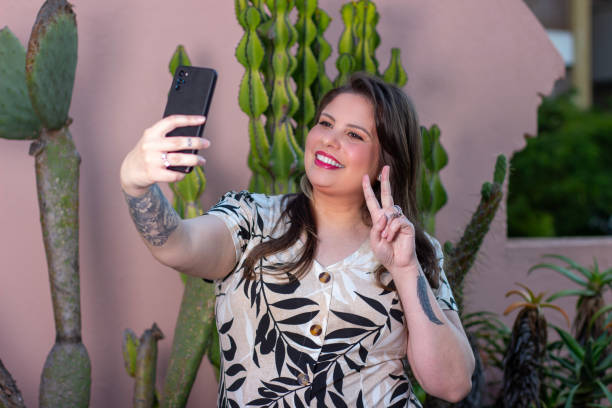In today’s digital age, everyone wants to document every moment of their lives. From social media platforms to online photo albums, we keep constantly oversharing our experiences with others. This phenomenon has even been given a name: Selfitis. But what is the psychology behind this need to continuously document our lives? Why do we feel the need to share every moment with others? In this blog post, we will explore the rise of Selfitis, the psychology behind the need to document every moment, and the impact it has on our mental health. Additionally, we will take a closer look at the rise of photo-sharing and how it has changed how we interact.
Introduction: The rise of selfitis and photo-sharing
In today’s digital world, our phones are like extra body parts; sharing photos is a big part of our daily routine. Selfies and apps like Instagram and Snapchat have made us think about why we’re so into taking and sharing pictures. We all love capturing moments, whether a beautiful sunset, a tasty meal, or everyday life. Our phones are always there, ready to snap a pic with a click. But why do we do it so much? One reason is that we all want to express ourselves and get approval. By choosing specific photos, we create an online version of ourselves. Each picture shows our experiences, feelings, and who we are, shaping how others see us.
Sharing photos also meets our natural need to connect and feel accepted. People who like, comment, or share our posts make us feel good and accepted. This positive feeling makes us want to share even more. Another reason is the fear of missing out (FOMO). We worry about missing out when we see others having exciting lives on social media.
So, we share our experiences to show that our lives are also interesting. Technology plays a significant role, too. Smartphones with great cameras and easy-sharing tools have simplified taking and sharing photos. Anyone with a smartphone can be a photographer now. Exploring why we’re so into taking pictures will help us understand how it affects our mental health, relationships, and society. Let’s discover more about self-expression, approval, and the trend of taking and sharing photos.

Understanding the psychology behind documenting every moment
In today’s digital world, we always take and overshare pictures of everything, from beautiful scenes to tasty meals. Have you ever wondered why we’re so hooked on capturing and sharing these moments? The answer lies in understanding the psychology behind it. “Selfitis,” the urge to take many selfies, is connected to how we present ourselves online. Oversharing our experiences helps shape our online image, reflecting who we are and what matters to us.
Validation and social connection also play a significant role. Getting likes and comments on our posts makes us feel accepted and boosts our self-esteem. In today’s social media-driven world, this kind of approval matters. Documenting every moment is like preserving memories. In a fast-paced world, capturing and revisiting these moments lets us relive and cherish them. It brings nostalgia and helps us retain memories that might otherwise fade away.
While sharing moments has benefits, it can also affect our mental well-being. The pressure to get the perfect photo or maintain a particular online image can lead to anxiety. Finding a balance and knowing why we need to document every moment is essential. In conclusion, understanding why we love capturing every moment helps us see the bigger picture of selfitis and photo-sharing. It shows our need for self-expression, validation, social connection, and memory preservation. Awareness of these factors helps us use social media more consciously and maintain a healthier relationship with technology and ourselves.
The role of self-esteem and validation in oversharing
In today’s digital world, sharing photos is a big part of our lives. Whether it’s beautiful scenery, delicious food, or many selfies, we love to capture and share every moment. But why do we feel this strong need? What makes us want likes and comments on our pictures? A big reason is self-esteem. Posting pictures lets us shape our online image in a world that cares a lot about looks and social approval. When people like and compliment our photos, it makes us feel good about ourselves and boosts our confidence.
Photo-sharing platforms act like a virtual stage where we can show off our lives and achievements. By posting carefully chosen photos, we highlight our life’s exciting and glamorous parts. These photos become a way to brag and feel proud of our actions. It’s not just about getting approval from others; oversharing photos is also a way to express ourselves. We can tell the online community about our personality, interests, and values through pictures. By creating a visual story, we define who we are online and look for acceptance and connection with people like us.
The rise of social media influencers adds another layer to this. With many online followers, these influencers depend on positive feedback to stay popular. They post excellent and inspiring photos to get admiration, making others want the same kind of approval. In conclusion, we love to share pictures and document every moment because of our basic needs for self-esteem, validation, and self-expression. Understanding these reasons helps us see why selfitis is a thing and why photo-sharing platforms are so popular.
The fear of missing out (FOMO) and its impact on our need to document
FOMO (Fear of Missing Out) is a big thing in today’s super-connected world. It’s that worry that we might be missing something extraordinary happening around us, and social media makes it even more intense by showing us others’ seemingly perfect lives. This fear affects why we feel the need to capture every moment. We want to prove that we’re actively involved in life’s adventures, so we grab our smartphones to take pictures and share them. The fear of being left out or not looking like we’re part of something fun makes us want to capture every little detail.
Photo-sharing apps like Instagram and Snapchat make this even more robust. They let us pick and share carefully chosen bits of our lives. The fear of missing out on likes, comments, and shares pushes us to update our feeds with cool-looking stuff.FOMO doesn’t just impact significant events; it goes into everyday things like meals, workouts, and random moments. Every moment becomes a chance to show off our lives and get confirmation from others that we’re living extraordinary lives.
But this fear has consequences. It can make us look for the next exciting thing instead of enjoying the present. It can also make us feel not good enough when we compare our lives to others’ highlight reels. Understanding why we fear missing out is essential. By knowing what drives our behavior, we can find a better balance between capturing and experiencing memories. It’s crucial to value real connections and meaningful experiences over constantly feeling pressured to document and share every part of our lives.
The connection between memory and photography
Photos have always helped us remember special times, from family pictures to capturing unique places during trips. But in today’s digital world, where our phones are like extra hands, the urge to take pictures all the time has become common. Some call it “selfitis,” where we can’t resist taking and oversharing selfies, causing a considerable debate among experts. Taking pictures is linked to our memory. Snapping photos can help us remember things better. When we take a photo, our brain breaks from placing every detail because the camera does it for us. This lets us enjoy the moment without worrying too much about remembering everything.
But relying too much on photos has downsides. Even though we capture many pictures, we still need to experience the moment fully. Instead of enjoying a beautiful sunset or a family laugh, we might get caught up in finding the perfect shot or editing our photos. Sharing pictures on social media makes things even more enjoyable. Studies found that when we share photos online, our memories match the image we want to show others. Our memories become shaped by the desire to make our lives look perfect and ideal.
Understanding how memory and photography connect helps explain why selfitis and photo-sharing are popular. While photos are great for keeping memories, finding a balance is essential. Taking a break from our phones and thoroughly enjoying the moment can lead to more meaningful and accurate memories, not just digital images.
The influence of social media on the need to document
Social media significantly impacts why we need to capture every moment. Nowadays, it feels like an experience is only complete if we take a picture, edit it, and share it for everyone to see on platforms like Instagram and Facebook.
Social media makes us always compare ourselves to others and want validation. The number of likes and comments we get decides how we feel about ourselves and where we stand socially. We wish to document our natural need to connect and fit in. We want others to see and recognize us; social media is the perfect place. By sharing what we do, we aim to get approval and build an online image showing our best side.
Social media also creates FOMO (Fear of Missing Out). When we see others’ perfect lives online, we might feel like we’re not good enough or missing out on things. This makes us want to document our experiences to stay relevant in the online world. The rise of influencers, people who are popular online, adds to this need to register. We want to be like them, so we should share our lives as they do.
But it’s essential to see the downsides of always wanting to document. It can make us only partially enjoy the moment because we’re too focused on getting the perfect photo or video. It can also make us anxious as we constantly compare ourselves to others and seek approval from outside. Ultimately, social media has a big say in why we want to document every moment. While it meets our need for connection and approval, finding a balance and valuing real experiences over constantly feeling the need to share our lives online is crucial.
The impact of curated online personas on self-perception
How we present ourselves online is a big deal in today’s digital world. Social media and photo-sharing apps let us carefully show only the best parts of our lives. But this isn’t just harmless fun. It’s essential to think about how this affects our minds. The need to share every moment online comes from wanting approval and be accepted. By choosing and editing the pictures we share, we create a version of ourselves that looks perfect but is only sometimes accurate.
Seeing these perfect online versions can mess with how we see ourselves. Scrolling through feeds full of flawless people and perfect moments might make us feel like we’re not good enough. This can make us feel less confident and even anxious. The pressure to keep up with this online image can take over our lives. Wanting likes, comments, and followers can become an obsession. Our self-worth might depend on what others think. This can create a cycle where we always feel the need to share our lives, afraid that we’ll lose importance or approval if we don’t.
It’s essential to tell the difference between our online and authentic selves. While it’s natural to want to show our best sides, it’s equally important to accept that life isn’t always perfect. By celebrating the unfiltered moments, we can have a healthier relationship with social media and how we see ourselves. In the end, the impact of online personas on how we see ourselves is a big deal. It’s crucial to be aware of the possible adverse effects and find a balance between our online and offline lives. Being true to ourselves and accepting who we are is critical in this age of sharing pictures.
Exploring the psychological benefits and drawbacks of documenting every moment
In today’s digital world, it looks like everyone’s a photographer, snapping pictures of everything in their lives. From simple moments to special ones, we feel the urge to take photos and share them. But why do we do this? And what does it mean for our minds? On the one hand, sharing every moment through photos can make us feel good and connected. It lets us shape our lives online, showing off our adventures and happy times. This way, sharing pictures becomes a way to express ourselves and get approval from our friends.
Also, taking photos helps us remember things. When we capture a moment, it’s like freezing it in time. Later, we can look at the pictures and relive those memories, like a family trip or a particular day. But there are downsides, too. Trying to get the perfect photo can make us miss out on what’s happening. Instead of enjoying a sunset or a tasty meal, we might be too focused on getting the best shot for social media. This constant need for approval can pressure us to live up to the perfect images we see online.
Also, always taking and sharing selfies, known as “selfies,” can become problematic. While selfies can make us feel good about ourselves, too much of it can make us too focused on how we look and depend on others’ approval for our self-worth. Ultimately, the rise of selfitis and photo-sharing shows our natural desire for connection, approval, and keeping memories. While there are good sides, like self-expression and memory-keeping, it’s essential to be careful about the wrong sides, like missing the present moment and becoming too obsessed. Balancing between capturing and living memories is the key to a healthy relationship with documenting our lives in the digital age.
How to find balance in the age of selfitis and photo-sharing
In today’s world, capturing and sharing everything is common, but finding a balance is crucial. Selfitis and sharing photos have made us feel we need to show our lives to everyone. While there are good things about this, like keeping memories and connecting with others, it’s essential to do it healthily. Firstly, it’s super important to be in the moment. Taking photos is cool, but remember to enjoy what’s happening now. Instead of just trying to get a perfect picture, take a moment to experience what’s going on and create memories that don’t need a photo.
Also, be picky about what you share. You don’t need to capture every little thing in your day. Focus on the moments that mean something to you. By being careful about what you share, you ensure your photos represent your life and what’s important to you. Setting limits on your time on photo-sharing apps is another good idea. These apps can be fun but can also take up much of your time. Decide when you’ll use them, and be mindful of not spending too much time comparing yourself to others.
Lastly, remember that life is not just online. While it’s tempting to be all about selfies and photo-sharing, real life is offline. Spend time with people face-to-face, enjoy the outdoors, and do things that don’t involve screens. Balancing between sharing and living in the moment makes life more complete. In the end, finding balance in the age of selfies and photo-sharing means being present, being careful about what you share, and being aware of your online time. By being intentional, setting limits, and prioritizing real-life experiences, you can enjoy photo-sharing healthfully and meaningfully.
Conclusion: Embracing mindful presence while still capturing life’s important moments
In today’s digital world, everyone is into selfitis and sharing photos. People are always taking pictures and showing them off. But, in the middle of all this, it’s super important to remember to be mindful and enjoy the moment. Even though it’s fun to take pictures and share them, it’s equally important to be fully there in the moment. Instead of just looking through your phone or computer, enjoy and experience life as it happens.
Being mindful means genuinely living in the moment—feeling what’s around you, hearing the sounds, and soaking in the emotions. It helps you connect with others and create memories that are more than just a picture. But it doesn’t mean you should stop taking pictures altogether. It’s about finding a balance. You can still enjoy capturing your life, but ensure it doesn’t detract from living the experience.
When you decide to take a picture, do it purposefully, and ensure it doesn’t stop you from thoroughly enjoying the present. This way, you can balance capturing memories and living in the present. Ultimately, the craze for selfitis and photo-sharing shows our natural wish to share our lives. But, it’s super important also to be aware of the need to be present. By finding a good balance, we can take pictures of important moments while thoroughly enjoying and being part of the present. Let’s aim for that perfect spot to share our lives and savor and treasure the precious moments that make up our lives.



